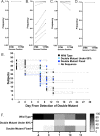SARS-CoV-2 entry into and evolution within a skilled nursing facility
- PMID: 37468595
- PMCID: PMC10356950
- DOI: 10.1038/s41598-023-38544-5
SARS-CoV-2 entry into and evolution within a skilled nursing facility
Abstract
SARS-CoV-2 belongs to the family Coronaviridae which includes multiple human pathogens that have an outsized impact on aging populations. As a novel human pathogen, SARS-CoV-2 is undergoing continuous adaptation to this new host species and there is evidence of this throughout the scientific and public literature. However, most investigations of SARS-CoV-2 evolution have focused on large-scale collections of data across diverse populations and/or living environments. Here we investigate SARS-CoV-2 evolution in epidemiologically linked individuals within a single outbreak at a skilled nursing facility beginning with initial introduction of the pathogen. The data demonstrate that SARS-CoV-2 was introduced to the facility multiple times without establishing an interfacility transmission chain, followed by a single introduction that infected many individuals within a week. This large-scale introduction by a single genotype then persisted in the facility. SARS-CoV-2 sequences were investigated at both the consensus and intra-host variation levels. Understanding the variability in SARS-CoV-2 during transmission chains will assist in understanding the spread of this disease and can ultimately inform best practices for mitigation strategies.
© 2023. The Author(s).
Conflict of interest statement
The authors declare no competing interests.
Figures






References
-
- Gallichotte EN, Quicke KM, Sexton NR, Fitzmeyer E, Young MC, Janich AJ, et al. Early adoption of longitudinal surveillance for SARS-CoV-2 among staff in long-term care facilities: Prevalence, virologic and sequence analysis. Microbiol. Spectr. 2021;9:e01003–e1021. doi: 10.1128/Spectrum.01003-21. - DOI - PMC - PubMed
Publication types
MeSH terms
LinkOut - more resources
Full Text Sources
Medical
Research Materials
Miscellaneous

